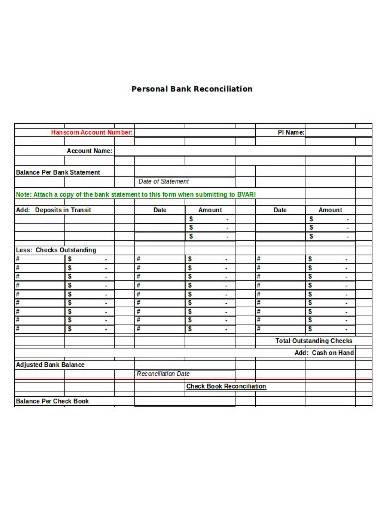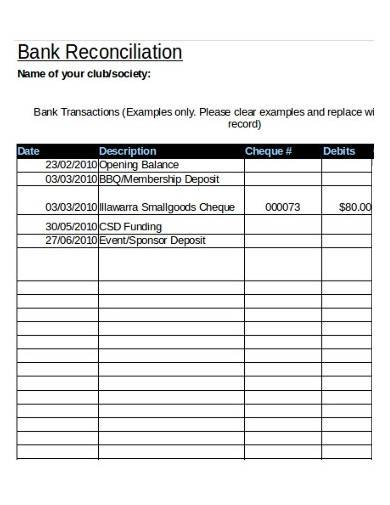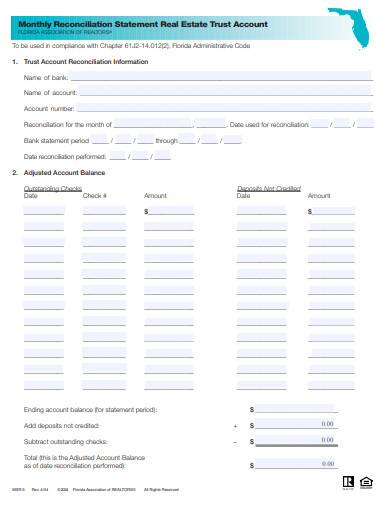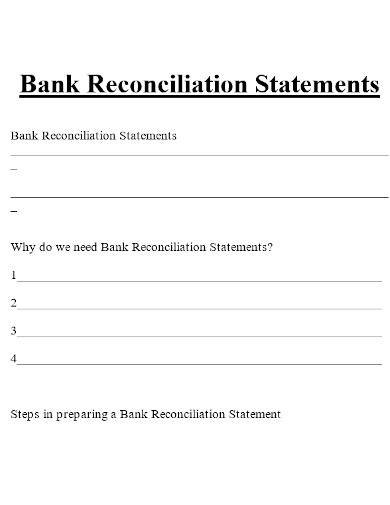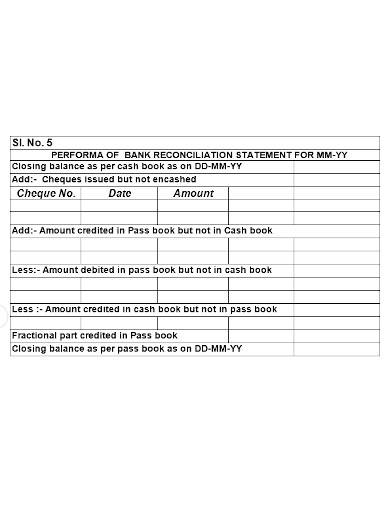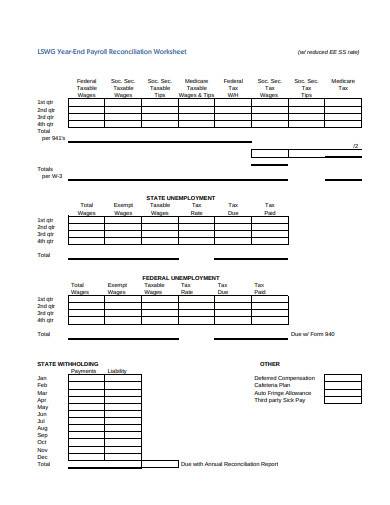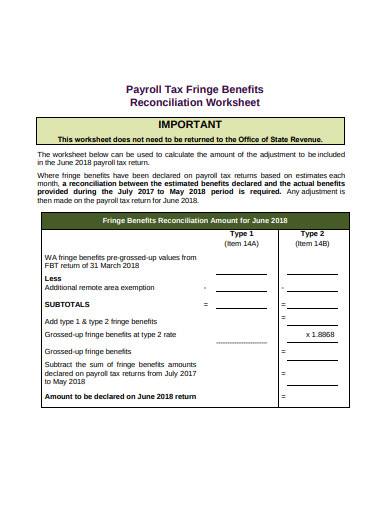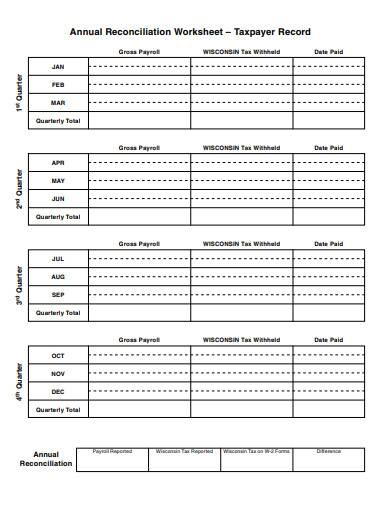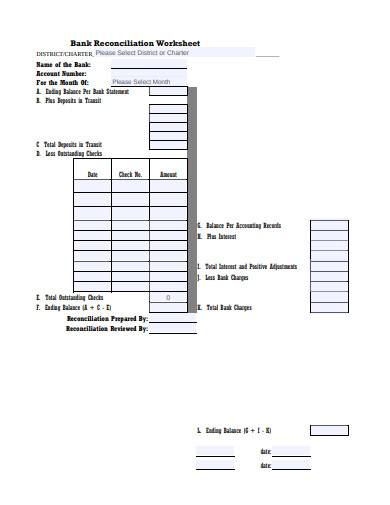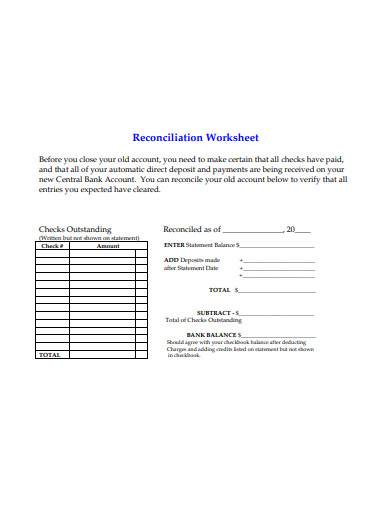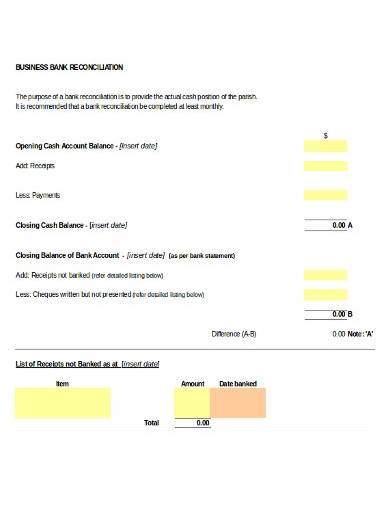A reconciliation statement is a formal document that contains the company’s or organization’s record of an account balance which aims to provide verification of the authenticity and accuracy of a company’s account balance. This document is useful for both external and internal auditors because they can use it as a part of their auditing process, particularly in accounts with large balances which is an important component of financial statements or accounting balance sheet.
FREE 10+ Reconciliation Statement Form Samples and Templates in MS Word | PDF | MS Excel
1. Personal Bank Reconciliation Form
2. Sample Bank Reconciliation Form
3. Blank Monthly Reconciliation Statement Form
4. Printable Bank Reconciliation Statement Form
5. Performa of Bank Reconciliation Statement
6. Year-End Payroll Reconciliation Worksheet
7. Reconciliation Worksheet Form
8. Reconciliation Worksheet Template
9. Bank Reconciliation Worksheet Form in PDF
10. Reconciliation Worksheet Form Sample
11. Business Bank Reconciliation Form
What is a Reconciliation Statement Form?
A reconciliation statement form is a printable template or document that contains information about banking records and transactions such as the difference between the bank statement and the general ledger. A bank reconciliation statement keeps track of entries every month to prevent possible discrepancies or issues in the future. It aims to match the records of cash account entries to the corresponding bank statements.
How to Use a Reconciliation Statement Form
A bank reconciliation statement provides the summarized information of business activities that reconciles with the company’s financial reports and records. It includes an outline of the company’s bank deposits, withdrawals, and other transactions that affects their bank account on a certain date or time period. With bank reconciliation statements, companies can ensure that all of their payments have been processed and collections of cash have been deposited into their bank accounts.
Step 1: Determine Your Starting Balance
If your company performs its reconciliation on a monthly basis, your starting balance will be the end balance of the month before. Then, review your ledger to check the record of your deposits, withdrawals, and cleared checks against your bank statement. Make sure that all amounts match and investigate any inconsistencies.
Step 2: Make Adjustments to the Cash Balance
From your bank statement balance, include deposits you have made that have not cleared yet, then deduct any checks that were not yet cleared. The result will be your adjusted cash balance which ensures that the balance in your ledger and bank statement matches.
Step 3: Include an Account for the Interests and Fees
Review your bank statement to check any interest in the account obtained during the month and include it in your reconciliation statement form. You also have to deduct any fees or penalties that the bank assessed that were not listed in your ledger or balance sheet.
Step 4: Compare Your End Balance
Once you have reviewed all your deposits and withdrawals, made changes to your cash balance, and accounted for fees and interests, the ending balance in your ledger should be the same balance in your bank statement. In case the two are different, you have to look through it to determine where the discrepancy occurred.
FAQs
When do reconciliation statements use?
The common situations where reconciliation statements are used are when companies compare the balances between their bank accounts, debt accounts, accounts receivable template, and accounts payable ledger.
What are the reasons for using bank reconciliation statements?
Bank reconciliation statements are provided because of cheques issued but not cleared in the bank, differences in the deposited cheque and its credited date, when the issued and received cheques are not presented to the bank for clearing, and more.
What are the benefits of bank reconciliation statements?
With bank reconciliation statements, your company can ensure that all necessary payments are processed and deposited, helps in detecting fraud, analyzes errors that can impact financial transactions, assesses the financial health of the company, and enables accurate and correct tax reporting.
A reconciliation statement form is a document used by companies to summarize all their bank transactions such as their deposits, withdrawals, extra charges, and interests in the company’s bank account while also making sure that it matches its financial statements and records. This document helps in identifying possible fraud and determining other fraudulent activities which ensure accurate tax filing.
Related Posts
FREE 10+ Writing Journal Entry Samples and Templates in MS Word | PDF
FREE 10+ Double Entry Journal Samples and Templates in MS Word | PDF
FREE 5+ Stock Ledger Samples and Templates in MS Excel | PDF
FREE 10 + Revenue Recognition Samples & Templates in PDF | MS Word
FREE 11+ Liability Insurance Application Samples and Templates in MS Word | PDF
FREE 11+ Petty Cash Reconciliation Samples and Templates in MS Excel | PDF
FREE 10+ Annuity Disclosure Form Samples & Templates in PDF
FREE 9+ Absorption Costing Samples & Templates in PDF | MS Word
FREE 10+ Prepaid Expenses Samples and Templates in PDF | MS Excel
FREE 7+ Depreciation Worksheet Samples & Templates in PDF | MS Word
FREE 10+ Turnover Ratio Analysis Samples and Templates in PDF
FREE 11+ Cost Volume Profit Analysis Samples & Templates in PDF | MS Word
FREE 10+ Bank Reconciliation Statement Samples and Templates in PDF | MS Word
FREE 9+ Balance Sheet Reconciliation Samples & Templates in PDF | MS Word
FREE 7+ Annuity Review Checklist Samples and Templates in MS Word | PDF

